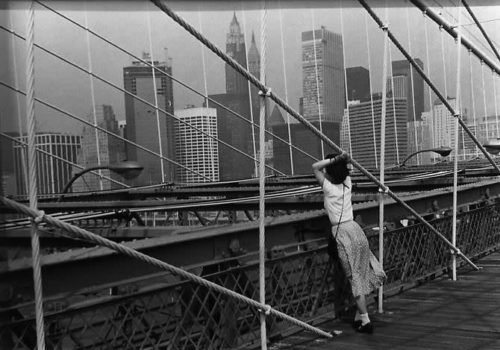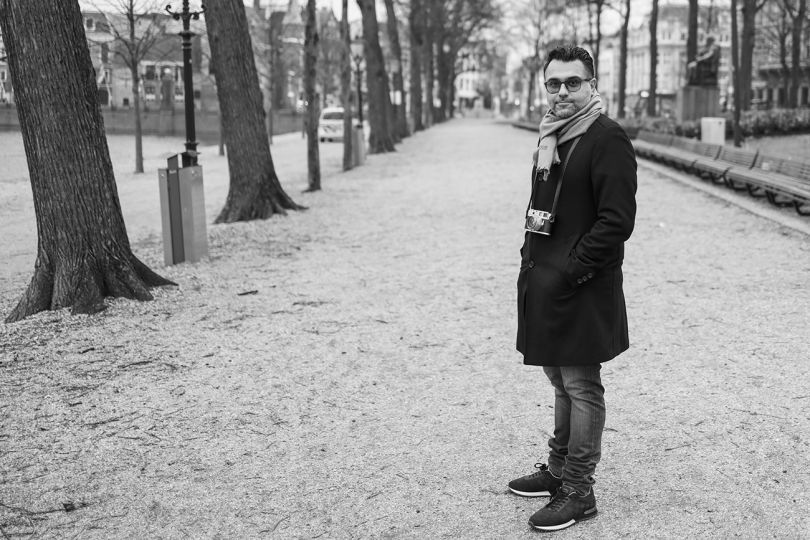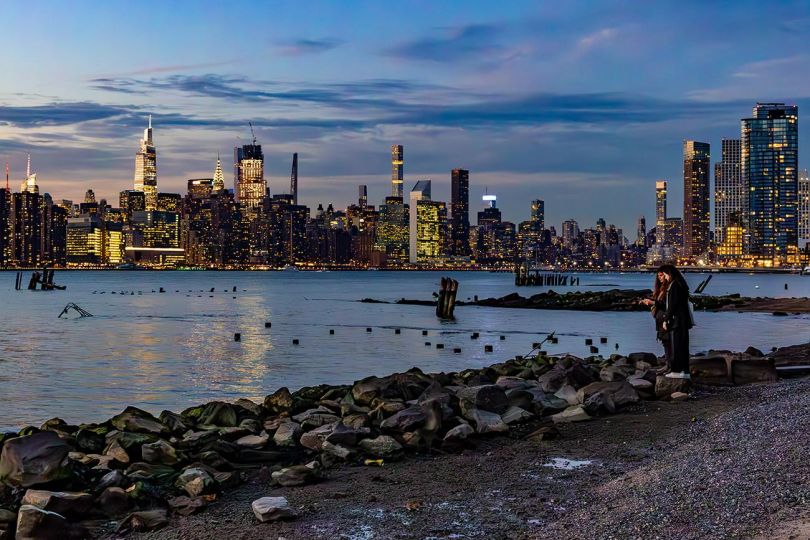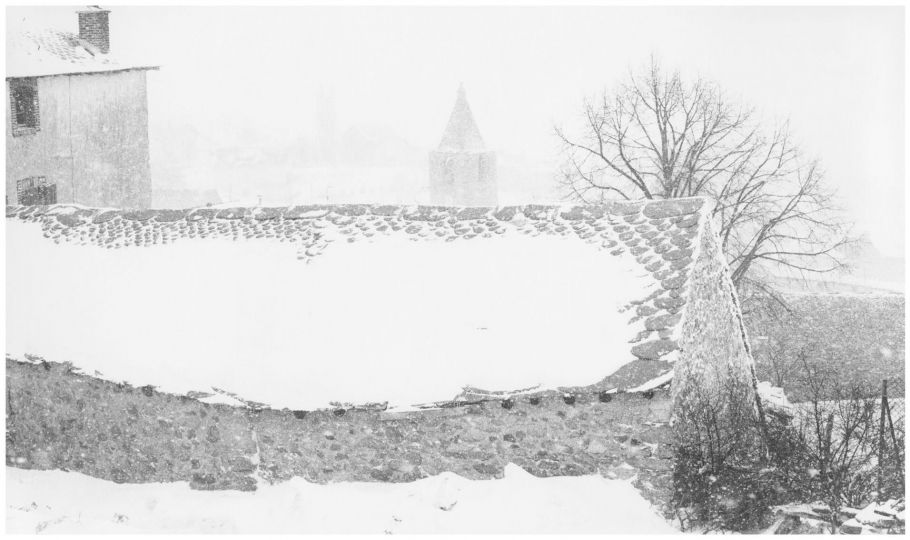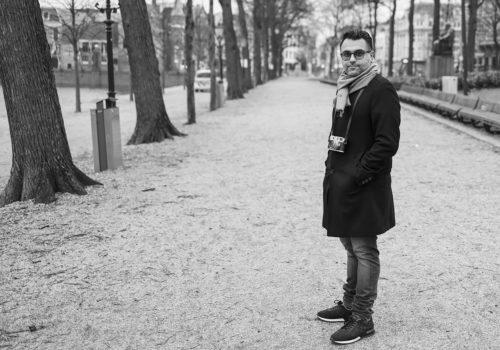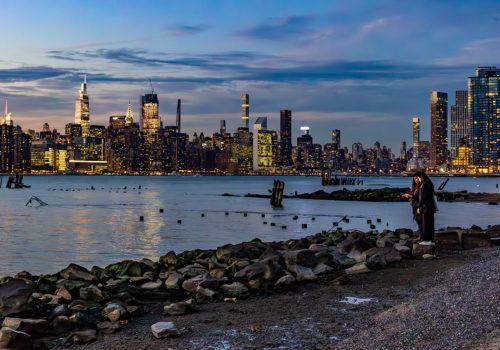This is the eleventh installment of the online series by Peter Fetterman Gallery called the Power of Photography highlighting hope, peace and love in the world. We invite you to enjoy and reflect on these works during this time.
Edouard Boubat (1923-1999)
Le Pont de Brooklyn, New York, 1982
© Estate of Edouard Boubat/Courtesy Peter Fetterman Gallery
I love images of hope, especially now.
One knows this young woman will succeed in anything she sets her mind to, swept up by the energy and spirit of what Steiglitz himself called one of his own great photos, “The City of Ambition.”
Ted Croner (1922-2005)

